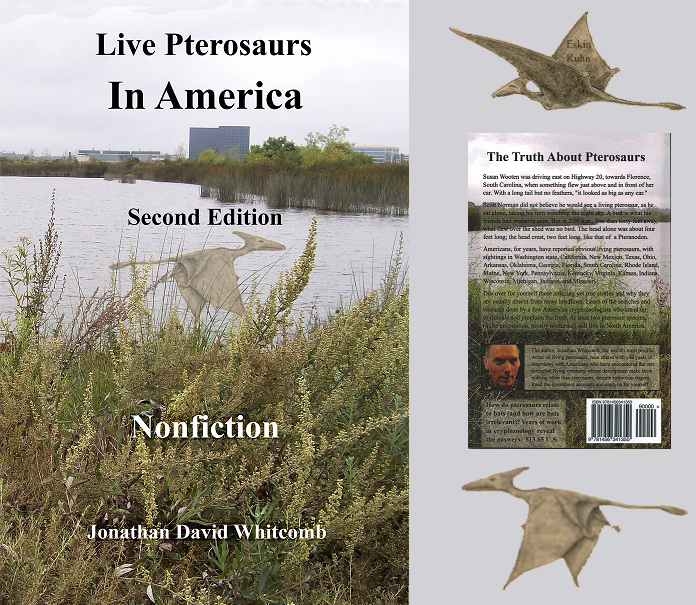I recently interviewed a man who observed several strange lights near Marfa, Texas. Driving across the country, two days earlier, Mr. Greene decided to stop at the Marfa observation station, having previously read of the strange lights. He watched the sky for hours, grateful that the flying lights were active that night. [details became available in late 2010, in the nonfiction book on cryptozoology: Live Pterosaurs in America.]
Why consider that American “ghost lights” relate to live pterosaurs? Consider the ropen light of Papua New Guinea. From them we can learn that at least some living pterosaurs are bioluminescent, in particular the apparent Rhamphorhynchoids of the Southwest Pacific. Now consider how many strange lights are reported across the United States: North Carolina (Brown Mountain Light), South Carolina (Bingham Lights), Arkansas (Dover Lights), Washington state (Yakima Lights)–those are only a sample. Strange lights have appeared across the United States for decades or centuries; apparent pterosaurs have also appeared across the United States for decades or centuries.
A bioluminescent flying creature much larger than a firefly I label “B.F.C.” Of course, not all strange flying lights are BFC, but I will also use this term to refer to ones with reasonable potential, from the perspective of my associates and I (who are convinced that the ropen is a bioluminescent Rhamphorhynchoid).
I took special interest in one of the lights that Mr. Greene described to me. It flew around for over two hours, until the sun was about to come up. At least once, it dived down, at a speed apparently consistant with what I would expect of a B.F.C. that is hunting bats, diving after one bat.
[The special characteristics of Marfa Lights should not be confused with ghost lights that may be barn owls.]
***************************************************************




The researchers James Bunnell and Ed Hendricks have assumed that the Marfa Lights were made by powerful forces having something to do with the ground and the air, energy of some kind. Recently a few people have considered the possibility that the Marfa Lights are made by pterosaurs that may be related to the ropen of Papua New Guinea. It sounds crazy, but the other ideas about non-alive things make no sense. Why would the lights dance like there was some purpose for that kind of movement? Why does one light divide into two lights then the two move away from each other and then they come back together or one of them spirals around before running into the other one? “Pterosaur” sounds very weird but if they are alive and can glow in the dark, maybe they would be smart enough to do those things and catch the bats that hunt the insects that are attracted to the lights.
What about the idea that car headlights cause all mysterious lights around Marfa, Texas? The problem with that idea is that the lights studied by scientists like James Bunnell and Edson Hendricks fly around this part of Texas only about once a month, not every night (as is the case with cars that drive on a nearby highway).
In addition, the characteristics of the CE-III lights are far different from those of car headlights. They suggest, to Mr. Bunnell, combustion-like qualities. They also fly above bushes where there is no road.
In one case, a CE-III fly straight for eleven miles (in eighteen minutes), where there is no highway or road (let alone one that is straight for eleven miles).